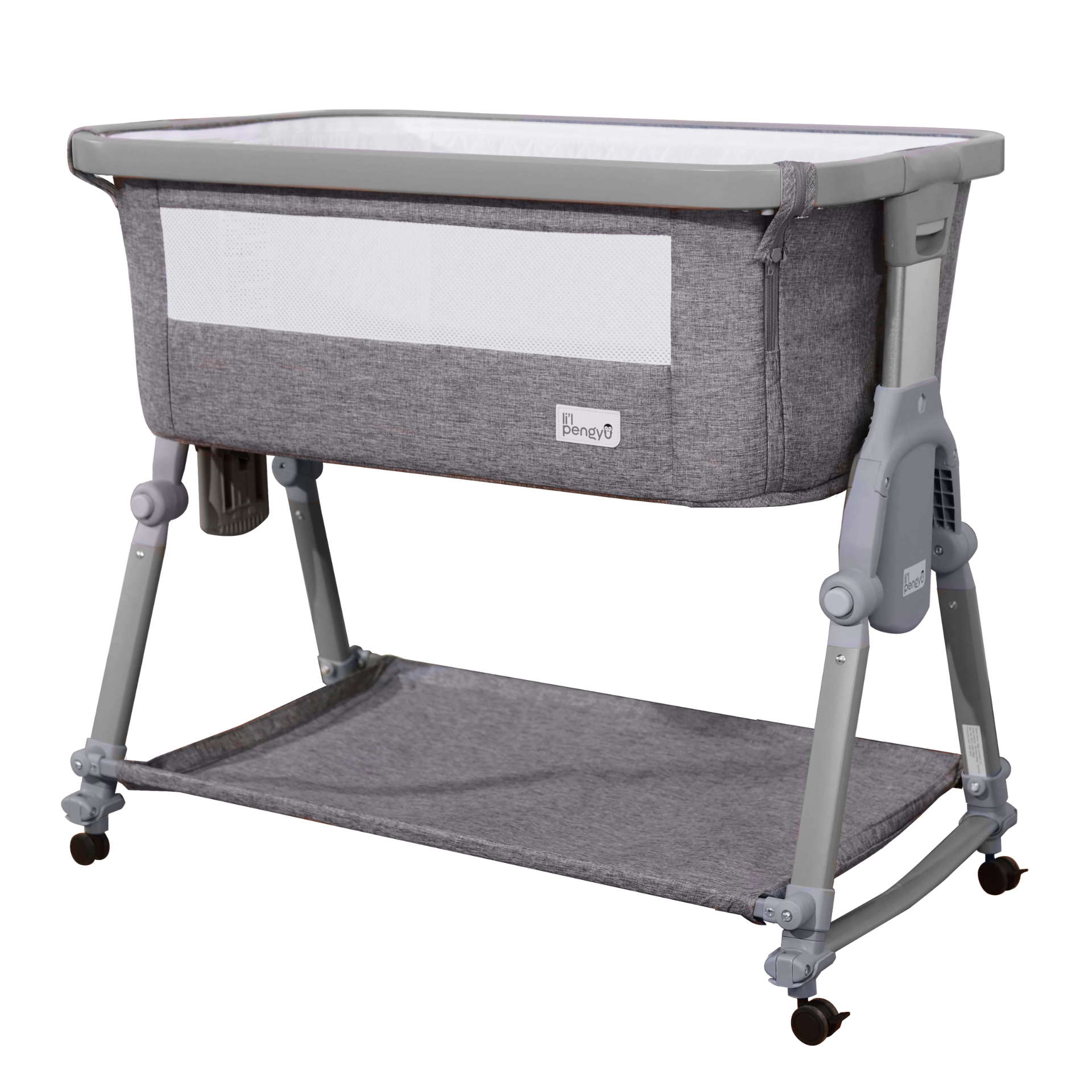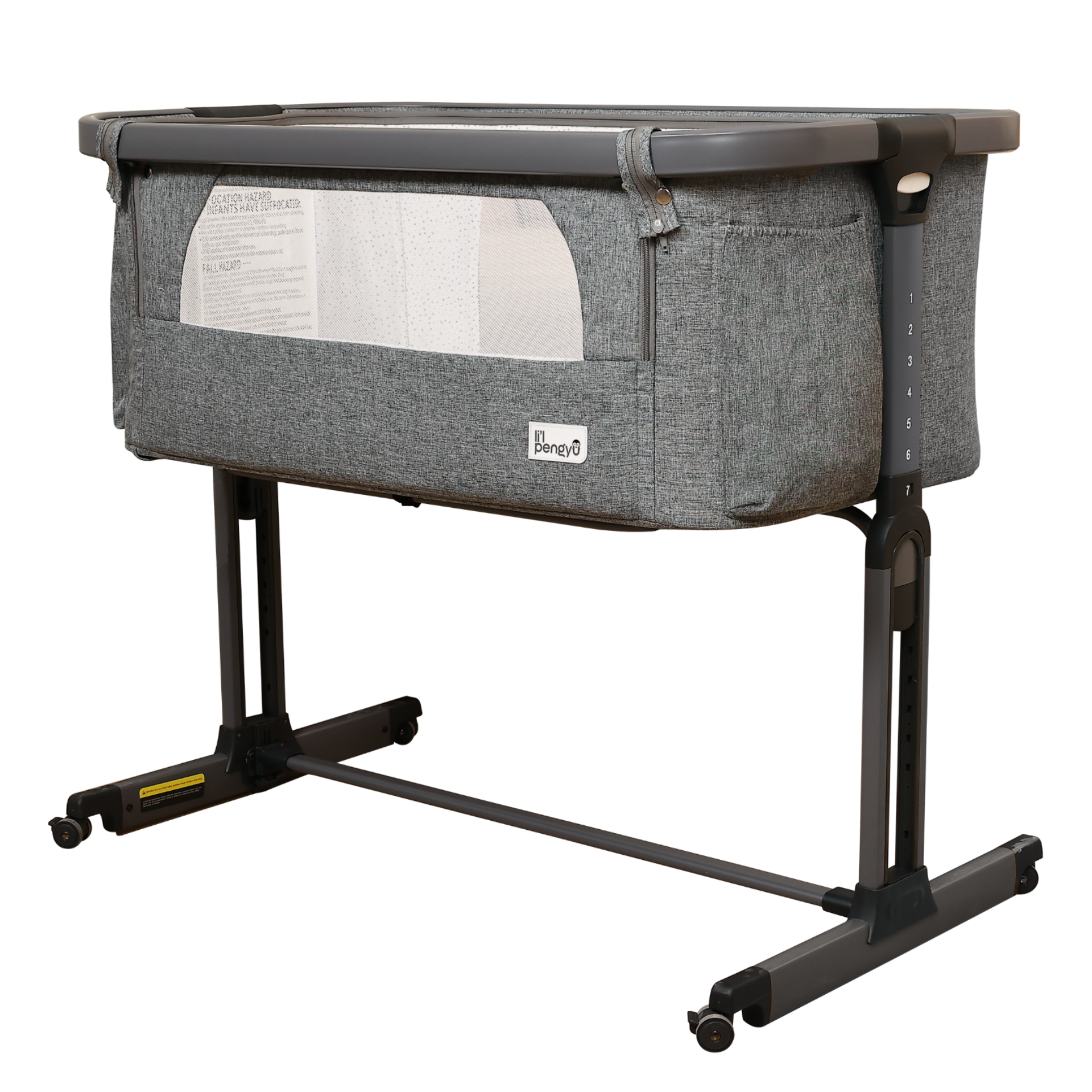Sleep is essential to babies, and parents must know how to keep their little ones safe while they slumber

As a soon-to-be parent, what’s the one topic you’ve probably gotten the most advice about? We bet it’s sleep. Parents always want to impart their wisdom to others when it comes to baby sleep practices – whether it’s right or not. This guide covers expert-recommended safe sleep practices for infants so you can feel comfortable while your newest little one sleeps.
How much sleep do babies need?
While there are no specific guidelines for the amount of sleep newborns up to four months should get, the American Academy of Sleep Medicine (AASM) says they typically receive 16-18 hours a day, and after four months, recommends 12-16 hours (including naps).
Why is sleep so important for babies?
Sleep plays a bigger role in the development of healthy children than people may realize, as it has a direct connection to health. It has a big effect on growth, weight, and immunity. Studies have also found that babies learn while they sleep.
Keeping your baby safe while sleeping
Because your little bundle of joy will be doing quite a lot of sleeping during their first several months, you have to make sure that you create a safe sleep space for them. To do this, these are the American Academy of Pediatrics (AAP) guidelines to keep in mind:
-Use a firm surface
Whether you use a crib or a bassinet, make sure that its surface is firm and flat. If it includes any sort of mattress, it needs to fit tightly. If your baby falls asleep in a stroller or car seat, move them into their regular sleeping spot as soon as you can.
-Put them on their back
Whenever you put your baby down to sleep, make sure they are on their back. This is a much safer position than on their side or stomach. While your baby will eventually begin to move – and may end up on their stomach over time – always start by placing them on their back.
-Keep everything out
While cribs filled with dolls and toys make for cute images in the movies or on TV, this is a very unsafe practice. Soft things like stuffed animals or pillows increase the chance of suffocation. This is why nothing other than a snuggly-fitted sheet should be in your baby’s bed. To keep your baby warm, you can dress them in thicker clothing or use a wearable blanket.
-Don’t co-sleep with your baby
It can be tempting to want to stay as close as possible to your baby all the time, but this can be quite dangerous while in bed. This is because if you fall asleep, there’s a chance that you could accidentally roll on top of them. There is also the increased risk of a pillow or blanket covering their face.
-Consider room sharing
The much safer alternative to sharing a bed is sharing a room. This makes it a lot easier to monitor your baby at night. Plus, with a bassinet with a removable side panel, you can still have your baby next to you, but in their own safe space. Another benefit is that this may prevent you from having to get up for nightly feedings.
The ins and outs of sleep training
Newborns pretty much live by their own rules for the first few months, and this means you’re basically catering to their whims and needs. Once they get to about four months, however, you can start thinking about sleep training. This is the process of training your baby to fall asleep on their own and put themselves back to sleep when they wake up. The result is more sleep for both your baby and yourself.
The four-month mark is typically the best time to begin sleep training because that’s when babies’ sleep cycles start to mature and their circadian rhythms go into effect. At this age, you may also no longer need to feed them at night, and they are usually old enough to learn how to self-soothe.
Sleep training methods
There are several different ways to sleep-train a baby, including:
-Cry it out
With this technique, you’ll put your baby to bed while they are still tired so they can learn to put themselves to sleep. You will make a point not to take them out of their bed until the morning or when it’s time for them to eat. As the name implies, this may involve a lot of crying, which is why it can be very tough for parents to do. Consistency is the key, and if you can bear it, this is generally the quickest way to get them sleep trained.
-Check and console
If the thought of letting your baby cry doesn’t appeal to you, this method may be the better option. Once you put your tired but awake baby down, you’ll then come back at different times to check on them, not pick them up. You could start at five minutes, for example, and then gradually increase the time between check-ins.
-Pick up, put down
With this technique, you’ll pick your baby up when they cry, but not for very long. Once they are soothed and settled down, you’ll put them back in their bed and leave the room. Many parents combine this method with the check and console method.
Discover Li’l Pengyu’s comfortable, safety-certified bassinets for baby
While it can take a long time for everybody in a household with a baby to get into a good sleep routine, just know that it will happen eventually. And when you’re ready to find a cute and comfy – not to mention safe – bassinet for your baby, be sure to check out what Li’l Pengyu offers.
Our patent-bending bassinets are CPSC- and ASTM-certified for safety you can count on. Their enlarged mesh designs on both sides prevent suffocation risks and allow parents to easily observe their babies’ every movement. Zippers are also designed to be on the outside to avoid hurting the baby. Make middle-of-the-night care safe and effortless.






